Didier Faustino captures Cuba's ruined School of Ballet using cage-mounted device
French artist Didier Faustino is staging a month-long performance around Havana's Modernist School of Ballet, strapping a camera rig to a local resident who is exploring the ruins during the city's art biennial (+ slideshow).
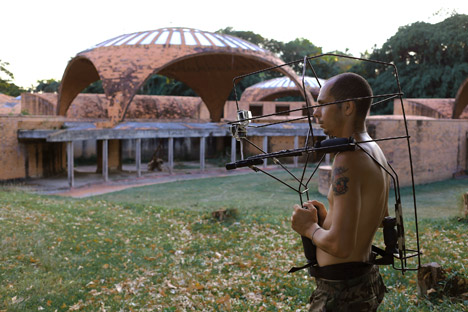
For Exploring Dead Buildings 2.0, Faustino's performer is delving into the Havana School of Ballet, surveying the building that was designed by Italian architect Vittorio Garatti following Cuba's revolution in the 1950s as part of the wider campus for the National Art Schools.
Intended as a training centre for the Cuban National Ballet, the brick and vaulted-tile structure was never completed due to economic repercussions of the 1962 Cuban Missile Crisis – when the US imposed a naval blockade on the Caribbean island after the Soviet Union deployed missiles there.
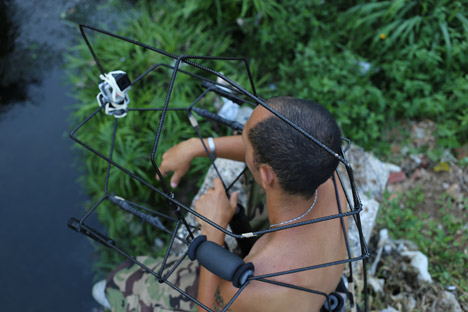
"The School of Ballet of La Havana is a building of the great deeds of utopian architecture," said a statement from the artist. "Its exuberant curves reflects the optimism offered by the Cuban revolution's possibilities. However, the project was never finished."
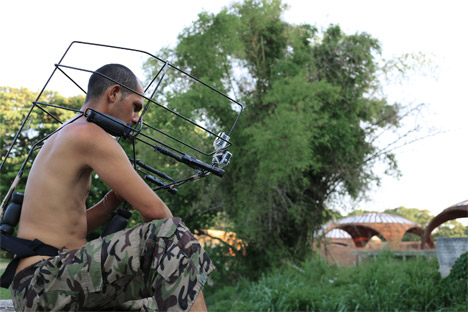
The domed complex was abandoned completely in 1965 and fell into disrepair, with some of the construction materials removed for use in other projects.
Designed in a similar style, the other buildings on the site – including the schools of Modern Dance and Plastic Arts by Ricardo Porro, Dramatic Arts by Roberto Gottardi, and Music by Garatti – have hosted classes in their unfinished and dilapidated states.
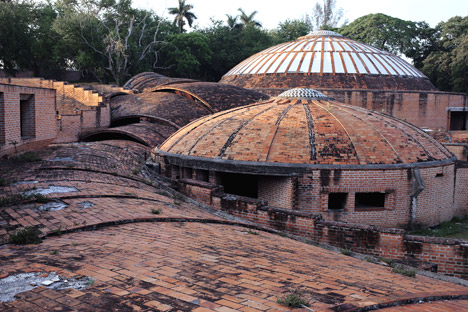
Following US exhibitions and an accompanying book titled Revolution of Forms, which presented photographs of the structures in 1999, the entire campus was given national monument status by the Cuban government and the buildings were earmarked for restoration.
Faustino's exploration of the ballet school is a development of a 2010 project, in which he sent a remote-controlled vehicle into the former Ministry of Highways building in Tbilisi, Georgia, to film its run-down spaces.
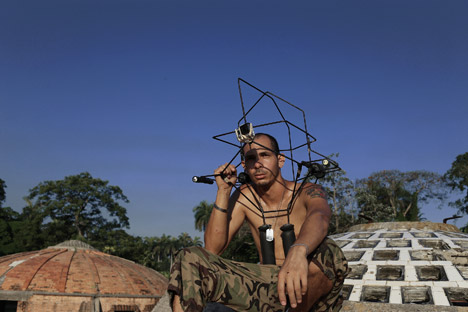
In version 2.0, a young Cuban is armed with a cage-like rig mounted over his head and shoulders and attached around his waist.
The padded metal structure has a camera attached to the front, which films the wearer's journey from his perspective as he wanders through the internal and external spaces around the complex. Torches are also located on either side of the rig.
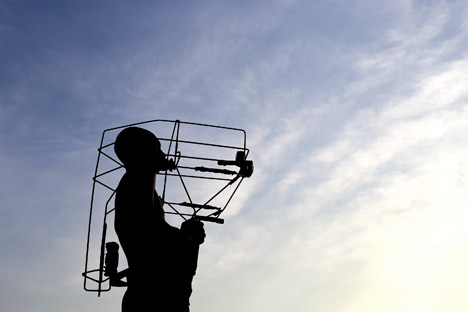
"During the performance, a young walker, covered with a makeshift armour, meanders in the heart of this utopia in disrepair," said Faustino's studio.
The cage is intended to represent the travel and trade restrictions placed on the island by the US in the 1960s due to its government's close ties with the USSR.
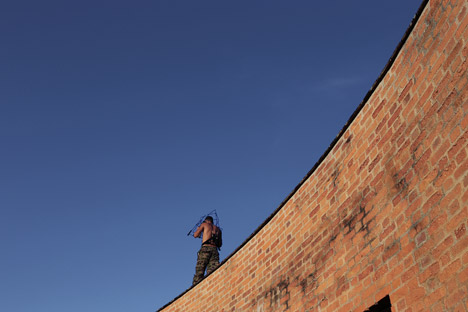
The US has recently begun to rebuild diplomatic relations with Cuba and is gradually relaxing these restrictions, making it easier for Cubans to leave the island.
Faustino aims to represent the so-called Cuban Thaw by allowing a young Cuban to freely explore a remnant of the island's pre-embargo history.
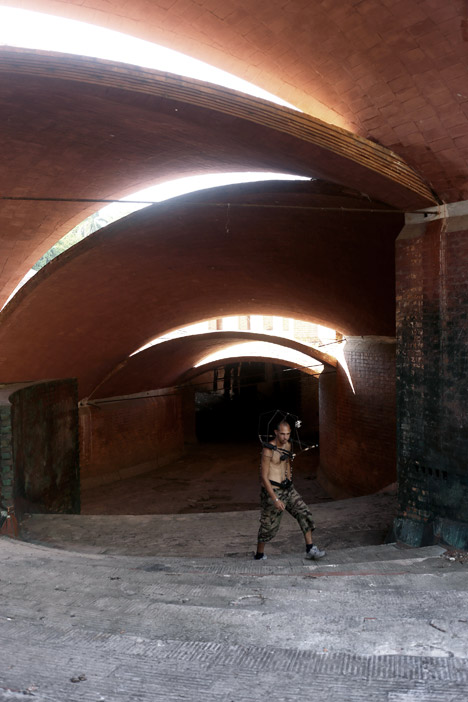
"Faustino's work portrays Cuban youth, captive of the island, and trapped by the historic failures," said the artist's statement.
"Exploring the dead building of the School of Ballet, with this nomadic armour as an architecture for exploration, discloses historical and political stratum, concealed into walls of this Modernist utopia which had been Cuba and refers to the recent evolution of the diplomatic relations between Cuba and the United States."
The 12th Havana Biennial runs from 22 May until 22 June 2015.